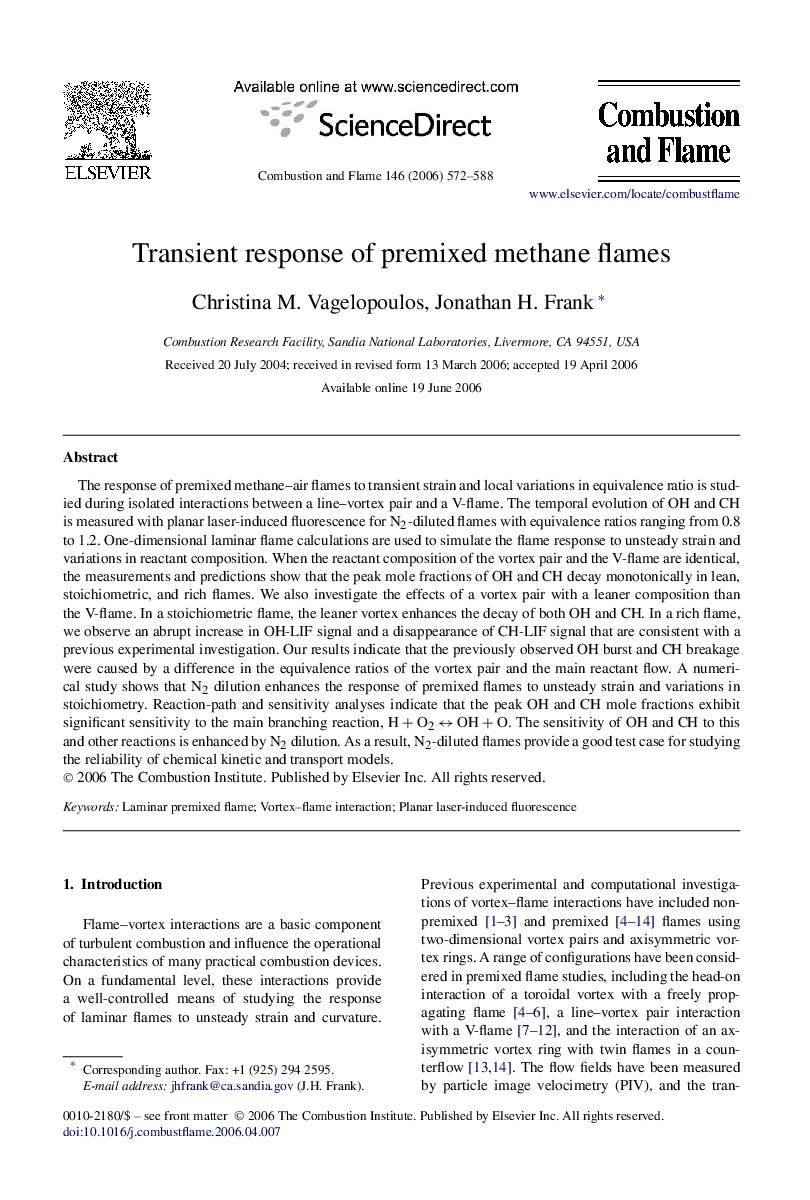| Article ID | Journal | Published Year | Pages | File Type |
|---|---|---|---|---|
| 167504 | Combustion and Flame | 2006 | 17 Pages |
The response of premixed methane–air flames to transient strain and local variations in equivalence ratio is studied during isolated interactions between a line–vortex pair and a V-flame. The temporal evolution of OH and CH is measured with planar laser-induced fluorescence for N2-diluted flames with equivalence ratios ranging from 0.8 to 1.2. One-dimensional laminar flame calculations are used to simulate the flame response to unsteady strain and variations in reactant composition. When the reactant composition of the vortex pair and the V-flame are identical, the measurements and predictions show that the peak mole fractions of OH and CH decay monotonically in lean, stoichiometric, and rich flames. We also investigate the effects of a vortex pair with a leaner composition than the V-flame. In a stoichiometric flame, the leaner vortex enhances the decay of both OH and CH. In a rich flame, we observe an abrupt increase in OH-LIF signal and a disappearance of CH-LIF signal that are consistent with a previous experimental investigation. Our results indicate that the previously observed OH burst and CH breakage were caused by a difference in the equivalence ratios of the vortex pair and the main reactant flow. A numerical study shows that N2 dilution enhances the response of premixed flames to unsteady strain and variations in stoichiometry. Reaction-path and sensitivity analyses indicate that the peak OH and CH mole fractions exhibit significant sensitivity to the main branching reaction, H + O2 ↔ OH + O. The sensitivity of OH and CH to this and other reactions is enhanced by N2 dilution. As a result, N2-diluted flames provide a good test case for studying the reliability of chemical kinetic and transport models.
